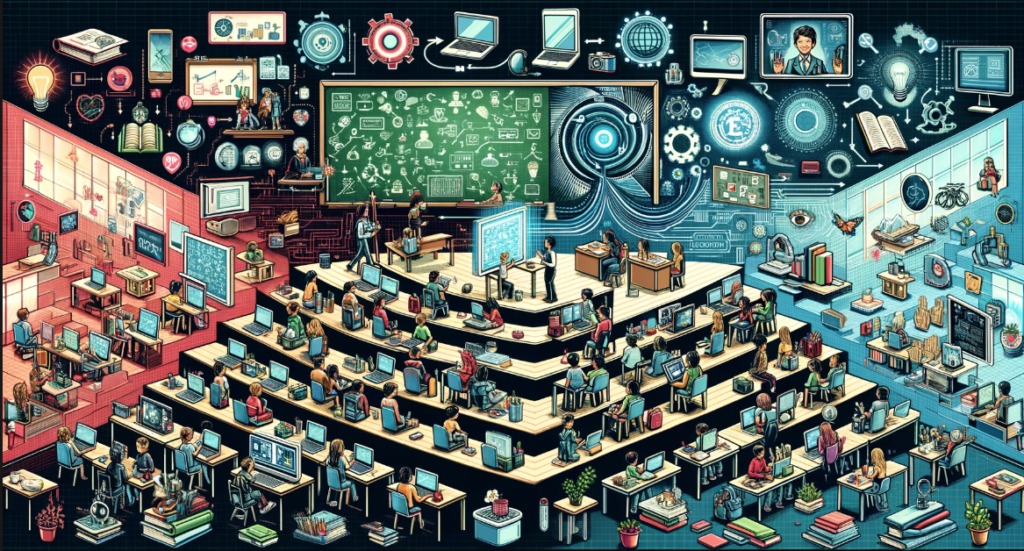Lesson 49.
The Role of Technology in Education (教育における技術の役割)

▮ Explanatory Text:
The integration of technology into education has transformed teaching and learning processes, making education more accessible, engaging, and personalized. Technology in education, or EdTech, encompasses a wide range of tools and practices, including online learning platforms, digital textbooks, educational apps, and virtual reality experiences. These technologies support a variety of learning styles, facilitate remote education, and provide students with vast resources and interactive content. However, the digital divide and the effective integration of technology into curricula pose challenges. This topic explores how technology enhances educational outcomes, the challenges of implementing technology in education, and the future prospects of EdTech.
▮ Common Phrases:
1. Digital literacy skills are essential for…
2. Personalized learning experiences can be created through…
3. The digital divide highlights disparities in…
4. Interactive learning tools engage students by…
5. The future of education technology may include…
▮ Example Sentences:
1. Digital literacy skills are essential for navigating today’s technology-driven world.
2. Personalized learning experiences can be created through adaptive learning software that tailors content to individual student needs.
3. The digital divide highlights disparities in access to technology and internet connectivity among different socioeconomic groups.
4. Interactive learning tools engage students by incorporating multimedia elements and gamification into lessons.
5. The future of education technology may include advancements in artificial intelligence, augmented reality, and blockchain for secure and transparent educational records.
▮ Questions:
1. How does technology enhance the learning experience for students?
This question encourages learners to discuss the benefits of technology in education, including increased engagement and accessibility.
2. What are the challenges of integrating technology into educational settings, and how can they be addressed?
Participants explore the obstacles to effective EdTech integration and strategies for overcoming these challenges.
3. How can technology bridge the gap in educational access and quality across different regions and demographics?
This prompts a discussion on the role of technology in mitigating educational inequalities.
4.&5. What ethical considerations arise with the use of technology in education, particularly regarding data privacy and screen time?
Learners examine the ethical issues related to technology use in education, focusing on student privacy and health.
Discuss the potential future developments in education technology and their implications for teaching and learning.
This question invites learners to speculate on future EdTech innovations and their potential impact on the educational landscape.
▮ Discussion Instructions:
Choose a specific technology or educational tool that interests you, such as a learning management system, an educational app, or a virtual classroom platform. Discuss its features, how it supports learning, and any challenges associated with its use. Reflect on how this technology represents broader trends in EdTech and its potential to shape future educational experiences.







